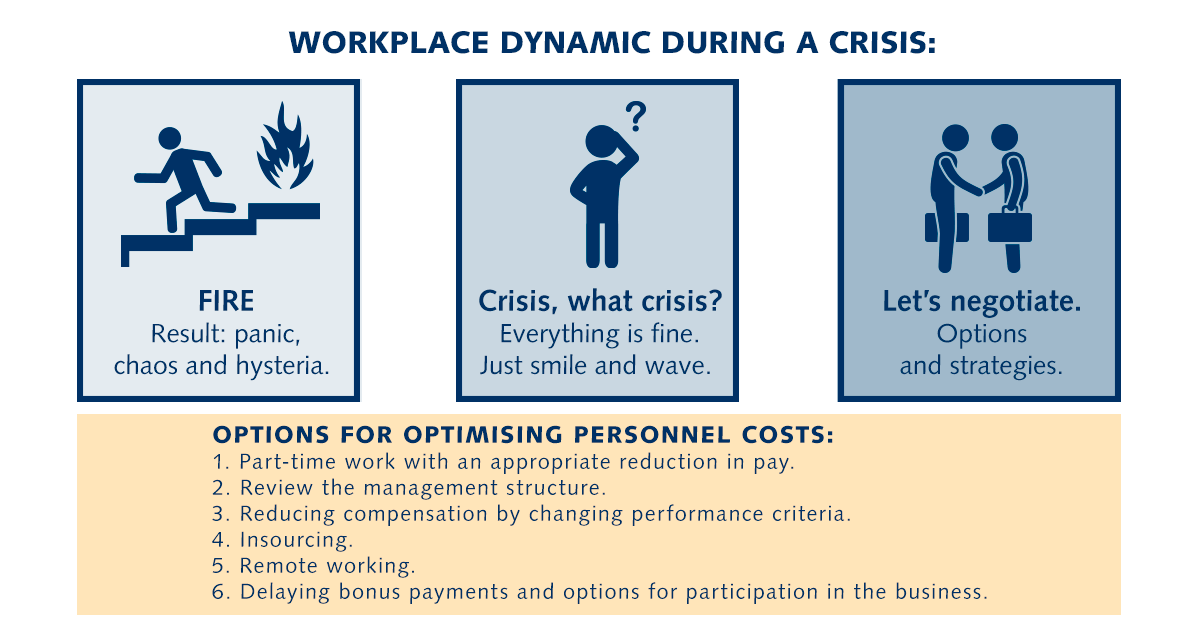Tips and tricks for workforce optimisation, “Probusiness.by”
Minsk, Belarus – With the wrong motivation and negligent attitudes towards hiring and firing procedures, workforce optimisation can result in additional costs and reputational damage.

Tatiana Belyaeva, Senior Associate at COBALT:
In addition to the standard grounds for dismissal, labour regulations include many additional grounds for terminating a contract early. Flexible remuneration systems are also popular with employers seeking to motivate their personnel to greater effort.
However, employers who neglect the legal framework underpinning their optimisation procedures are at risk of losing money and reputation. The most common problems can be avoided with a little advance planning:
- If you revise an employee’s performance appraisal criteria, scores or KPI, be sure to reinforce this process with internal documents such as salary regulations, bonus regulations and contract riders;
- Any change to an employee’s remuneration or work regime (e.g. full-time to part-time, office-based to remote working, fixed to flexible remuneration) is likely to be deemed a significant change in working conditions. Labour codes frequently stipulate a statutory notification period for such changes;
- Within a flexible remuneration system, a minimum level of compensation should be set in accordance with the current legislation stipulations. It is best to include these provisions in internal salary regulations rather than the employment contract itself, because these regulations are easier to amend;
- Pay close attention to the regulations governing executive salaries. For example, in Belarus, a director’s average annual remuneration must not exceed eight times the average salary in the company, and this applies to directors of both public and private companies. However, the Belarusian legislation provides for other forms of compensation for top executives;
- Consider stock options as a way to motivate employees and encourage engagement;
- Make a clean break with departing top managers. Dismissing executives without paying attention to the legal requirements and the nuances of the situation can be very costly. As a rule, issues arise when dismissals are incorrectly documented, or severance payments are incorrectly calculated. Top managers and executives are savvy – they know the law and are not afraid to use it;
- Consider amending executive contracts. For example, under Belarusian labour law it is possible to add a clause, which gives the founder the power to decide on the dismissal of the executive. Moreover, it is important to specify the amount of severance pay that the dismissed executive will receive.

Lola Trapsh, Country Manager Belarus at Pedersen & Partners:
It is often the case that management immediately responds to the need for optimisation with a harsh downsizing, primarily from the HR, Marketing and even Sales departments.
The downsized employees are gone, but their functions and tasks remain. There is a risk that after a few months, the company will re-hire employees for these functions and tasks, and the new employees will be untrained, unpredictable and potentially disloyal.
Redistributing the workload among the remaining employees is also likely to be a suboptimal strategy. Employees who are forced to take on extra tasks will start to demand commensurate rewards, with a corresponding impact on personnel costs. In addition, the additional workload will tend to reduce effectiveness. If employees are forced to give 120%, the final 20% will not be their best work.
There are three main types of workplace dynamic:
- “FIRE!” Employees are told that the company is in trouble, given additional tasks and told to pick up the pace. The result is panic, chaos and hysteria;
- “Crisis, what crisis? Everything is fine. Just smile and wave.” Is the company really in a strong market position, or is everyone in denial?
- ”Let’s negotiate.” This does not necessarily mean an all-hands meeting where everyone votes on what to do. Instead, the management explains the situation, the problems and challenges that the company faces, and the plan of action. It might just work!
Options and strategies
There are multiple options for optimising personnel costs:
- Offering part-time work with an appropriate reduction in pay. For example, the CEO of one company motivated his employees to work two “released” hours per day on a new unpaid project. If the project is successful, it becomes paid work;
- Reviewing the management structure by eliminating a large number of line managers. In difficult times, international companies often reduce middle management positions, enlarging a single manager’s department from 8-10 to 15 people;
- Reducing compensation by changing performance criteria from the classic 80:20 (80% fixed salary to 20% bonuses) to 20:80 (20% fixed salary to 80% bonuses). However, in businesses such as restaurants and retail banks, it is inadvisable to base the wages of “front of house” staff (who have direct customer contact) on quantitative performance criteria, as this is often achieved at the expense of quality service;
- Insourcing: you may be surprised to learn that you have employees who are able to do tasks for which you currently pay an external provider.
Tasks that can be effectively insourced include:
- Web design;
- Market research;
- Feasibility studies;
- Translation, editing and proofreading.
There are many other tasks which are usually outsourced so that employees are not distracted from their main purpose, but which can be provided internally. For effective insourcing, employers must have an accurate picture of the skills and competencies of their personnel.
Remote working: this is an idea that has been popularised by the IT sector, where it is a common reward for high performance and a form of advancement. However, it is important to ensure that remote working does not have a detrimental effect on corporate loyalty, teamwork and other internal qualities.
Delaying bonus payments and options for participation in the business. This option is usually possible within top managers’ contracts, and can of course be negotiated.
It isn’t always possible for a stricken company and its employees to negotiate their way out of trouble. If layoffs become necessary, there are several strategies:
- Sort employees into “stars,” “solid investment” and "easily replaceable."
- Eliminate two or three ordinary performers and hire one strong performer.
- Conversely, eliminate an “expensive” employee in favour of an "average" replacement. At the same time, we must not forget that a group of “average” employees will need to be guided and managed by an outstanding leader.
Pedersen & Partners is one of the fastest-growing, fully integrated Executive Search firms worldwide; it is 100% owned by its partners who all work full-time to serve its clients. The firm celebrated its 15th anniversary in January 2016, and to mark this occasion, it has created a timeline web page, featuring key milestones for the firm’s development and has released an anniversary video.
 Lola Trapsh is the Country Manager for Belarus at Pedersen & Partners. Before joining the firm in 2010, Ms. Trapsh built a strong career working on both the HR Management and Executive Search functions in various senior level positions. Prior to joining the firm, she was the Director of another Executive Search firm in Belarus.
Lola Trapsh is the Country Manager for Belarus at Pedersen & Partners. Before joining the firm in 2010, Ms. Trapsh built a strong career working on both the HR Management and Executive Search functions in various senior level positions. Prior to joining the firm, she was the Director of another Executive Search firm in Belarus.
Pedersen & Partners is a leading international Executive Search firm. We operate 56 wholly owned offices in 52 countries across Europe, the Middle East, Africa, Asia & the Americas. Our values Trust, Relationship and Professionalism apply to our interaction with clients as well as executives. More information about Pedersen & Partners is available at www.pedersenandpartners.com
If you would like to conduct an interview with a representative of Pedersen & Partners, or have other media-related requests, please contact: Diana Danu, Marketing and Communications Manager at: diana.danu@pedersenandpartners.com
